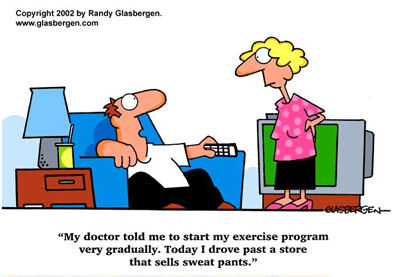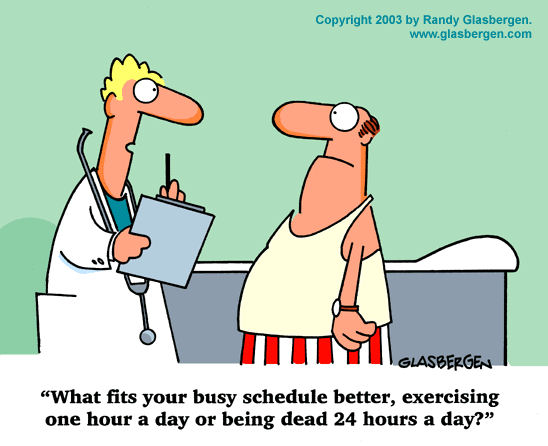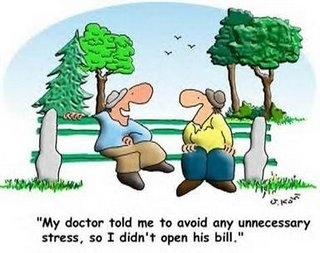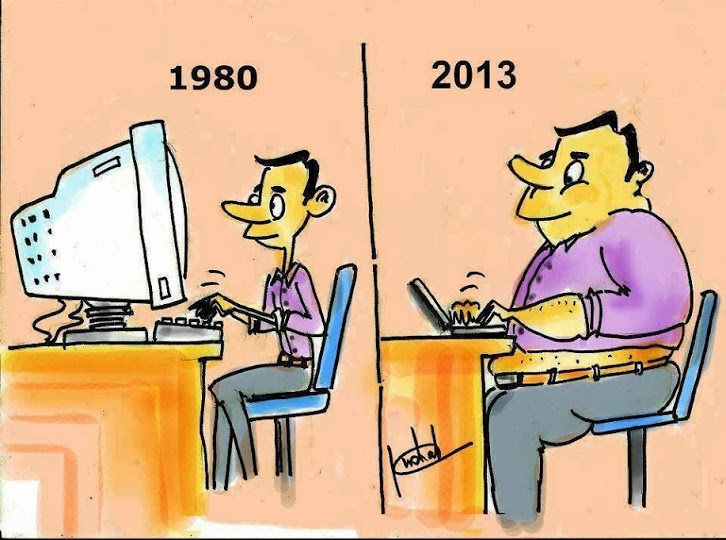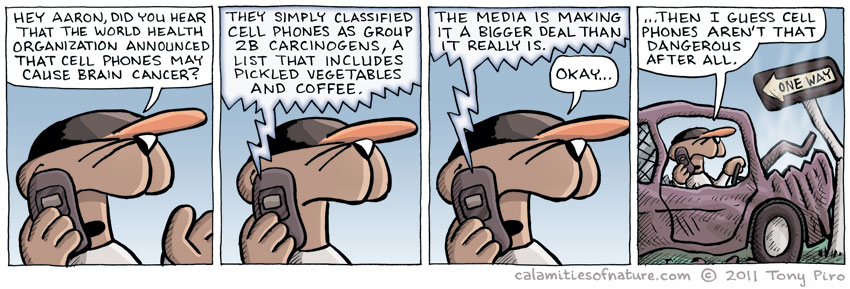|
|
||
|
||
|
Privacy Policy | Editorial Policy | Profit Policy | Join the Association | List of Members | Contact us | Index | Links |
||
|
Back Go to page: 1 2 3 4 5 6 7 8 9 10 11 12 13 14 15 16 17 18 19 20 Forward
|
||
|
Health and Life Style. |
||
|
Self-Harm amongst Military Personnel.
Ian McPhedran National defence writer
There has been a disturbing jump in the number of self-harm incidents and suicides in the military with the Australian Veterans Suicide Register recording 10 deaths between 2012 and 2015 whereas this year alone there has been 25.
A high-level source has said that top defence brass didnít even know that the self-harm list existed. When an ADF member is identified as being at risk of suicide, self-harm or harm to others, Defence mental health professionals undertake a comprehensive mental health and risk assessment.
A
Service Police document entitled Ďself-harm and suicide attempts
2008-2014í shows that
A total of 174 of the 212 people who committed self-harm were males with 75 of them aged between 26 and 34 years. The next highest age bracket was 17 to 25 years with 62 instances followed by 35 to 43 years with 50 and just 20 in the 44 to 52 years age group.
The highest rank involved was a RAAF Wing Commander followed by an Army Major and several Captains while there were a number of Warrant Officers and Sergeants included in the disturbing statistics.
The number of incidents varies each year with last yearís total of 58 a major increase on the 25 in 2013 which was a drop on the 2012 result of 37 and 35 in 2011.
Vice-chief of Defence Vice-Admiral Ray Griggs has said that Defence
was very concerned
Vice Admiral Griggs said the military had a strong commitment to mental health and especially overcoming the stigma attached to issues such as depression and post-traumatic stress. He said that Defence was at the forefront of what is a truly national challenge. Defence research shows that military personnel had a higher rate of suicidal thoughts but a lower rate of suicide than the general community.
Clinical Director at the South Pacific Private Hospital in Sydney Dr
Ben Teoh treats damaged veterans and he said he was seeing a growing
number from Afghanistan suffering from chronic Post Traumatic Stress
Disorder (PTSD). He said many were not getting the support
Dr Teoh says they are not getting better so they feel people do not appreciate the severity of their condition and they have a sense of hopelessness and many are very angry and anger is directly related to suicide.
Dr Teoh said the constant worry about being shot by both the enemy and the Afghan soldiers they were training had preyed on the minds of many veterans and made their circumstances very traumatic. He said these poor people canít distinguish between the enemy and peaceful people and he fears they might act on it.Ē
SELF-HARM IN DEFENCE:
2008 (six months) = 7 2009 = 21 2010 = 29 2011 = 35 2012 = 37 2013 = 25 2014 = 58
By age group:
17-25 years = 62 26-34 = 75 35-43 = 50 44-52 = 20 53 plus = 5
By service:
Army = 175 Navy = 20 RAAF= 17
Very sad!!!
|
||
|
Sugar is it that bad??
Whatís the truth about sugar, is it bad for you or is it good for you. It all depends on what you read really.
At the end of the second world war, the worldís population was reasonably fit. There are hundreds of photos of people in the streets, in all countries, celebrating the end of the war, what is noticeable though, is there is not an overweight person to be seen. What happened?Did all of a sudden the entire western world just become a bunch of gluttons and sloths? All at the same time? I mean, get real!!
Today the common consensus is we are eating far too much sugar. It is now thought that excessive added sugar is the single worst ingredient in the modern diet. Sugar can have harmful effects on metabolism and contribute to all sorts of diseases.
Here are 10 disturbing reasons why you should avoid excessive added sugar like the plague.
1. Added sugar contains no essential nutrients and is bad for your teeth.
Youíve probably heard this a million times beforeÖ but itís worth
repeating. Added sugars
Bottom Line: Sugar contains a lot of calories, with no essential nutrients. It also causes tooth decay by feeding the harmful bacteria in the mouth.
2. Added sugar is high in fructose, which can overload your liver.
In
order to understand what is so bad about sugar, you need to
understand what it is made of. Before sugar enters the bloodstream
from the digestive tract, it is broken down into two
This is not a problem if we eat a little bit (such as from fruit) or we just finished an exercise session. In this case, the fructose will be turned into glycogen and stored in the liver until we need it. However, if the liver is full of glycogen (much more common), eating a lot of fructose overloads the liver, forcing it to turn the fructose into fat. When repeatedly eating large amounts of sugar, this process can lead to fatty liver and all sorts of serious problems.
Important, this does NOT apply to fruit. It is almost impossible to overeat fructose by eating fruit.
There is also massive individual variability here. People who are healthy and active can tolerate more sugar than people who are inactive and eat a Western, high-carb, high-calorie diet. You can see more info in the video below.
Bottom Line: For people who are inactive and eat a Western diet, large amounts of fructose from added sugars get turned into fat in the liver.
3. Overloading the liver with fructose can cause non-alcoholic fatty liver disease.
When fructose gets turned into fat in the liver, it is shipped out as very low density lipoprotein (VLDL) cholesterol particles, however, not all of the fat gets out, some of it can lodge in the liver. This can lead to Non-Alcoholic Fatty Liver Disease (NAFLD), a growing problem in Western countries that is strongly associated with metabolic diseases. Studies show that individuals with fatty liver consume up to 2-3 times as much fructose as the average person.
Bottom Line: Excess fructose gets turned into fat, which can lodge in the liver and cause non-alcoholic fatty liver disease.
4. Sugar can cause insulin resistance, a stepping stone towards metabolic syndrome and diabetes
Insulin is a very important hormone in the body. It allows glucose
(blood sugar) to enter cells
One feature of the metabolic dysfunction that is caused by the Western diet, is that insulin stops working as it should. The cells become ďresistantĒ to it. This is also known as insulin resistance, which is believed to be a leading driver of many diseases, including metabolic syndrome, obesity, cardiovascular disease and especially type II diabetes
Many studies show that sugar consumption is associated with insulin resistance, especially when it is consumed in large amounts.
Bottom Line: When people eat a lot of sugar, it can cause resistance to the hormone insulin, which can contribute to many diseases.
5. The insulin resistance can progress to type ii diabetes.
When our cells become resistant to the effects of insulin, the beta cells in our pancreas make more of it. This is crucial, because chronically elevated blood sugars can cause severe harm. Eventually, as insulin resistance becomes progressively worse, the pancreas canít keep up with the demand of producing enough insulin to keep blood sugar levels down. At this point, blood sugar levels skyrocket and a diagnosis of type II diabetes is made. Given that sugar can cause insulin resistance, it is not surprising to see that people who drink sugar-sweetened beverages have up to an 83% higher risk of Type II diabetes.
Bottom Line: Because of the harmful effects of sugar on the function of insulin, it is a leading driver of type II diabetes.
6. Sugar can give you cancer.
Cancer is one of the leading causes of death worldwide and is characterized by uncontrolled growth and multiplication of cells. Insulin is one of the key hormones in regulating this sort of growth. For this reason, many scientists believe that having constantly elevated insulin levels (a consequence of sugar consumption) can contribute to cancer. In addition, the metabolic problems associated with sugar consumption are a known driver of inflammation, another potential cause of cancer.
Bottom Line: There is considerable evidence that sugar, due to its harmful effects on metabolism, can contribute to cancer.
7. Due to its effects on hormones and the brain, sugar has unique fat-promoting effects.
Not all calories are created equal. Different foods can have different effects on our brains and the hormones that control food intake. Studies show that fructose doesnít have the same kind of effect on satiety as glucose. In one study, people drank either a fructose-sweetened drink or a glucose-sweetened drink. Afterwards, the fructose drinkers had much less activity in the satiety centres of the brain and felt hungrier. There is also a study where fructose didnít lower the hunger hormone ghrelin nearly as much as glucose did. Over time, because the calories from sugar arenít as fulfilling, this can translate into an increased calorie intake.
Bottom Line: Fructose doesnít cause satiety in the brain or lower the hunger hormone ghrelin nearly as much as glucose.
8. Because it causes massive dopamine release in the brain, sugar is highly addictive.
Sugar
can be addictive for a lot of people. Like abusive drugs, sugar
causes a release of dopamine in the reward centre of the brain. The
problem with sugar and many junk foods is
Bottom Line: Because sugar causes a large release of dopamine in the brain, it can cause addiction in a lot of people.
9. Sugar is a leading contributor to obesity in both children and adults.
The way sugar affects hormones and the brain is a recipe for fat gain disaster. It leads to decreased satiety and can get people addicted so that they lose control over their consumption. Not surprisingly, people who consume the most sugar are by far the most likely to become overweight or obese. This applies to all age groups. Many studies have examined the link between sugar consumption and obesity and found a strong statistical association. The link is especially strong in children, where each daily serving of sugar-sweetened beverages is associated with a whopping 60% increased risk of obesity. One of the most important things you can do if you need to lose weight is to significantly cut back on sugar consumption.
Bottom Line: Because of the effects of sugar on hormones and the brain, sugar dramatically increases the risk of becoming overweight or obese.
10. It ainít the fat, itís sugar that raises your cholesterol and gives you heart disease.
For
many decades, people have blamed saturated fat for heart disease
which is the #1 killer
These are all major risk factors for heart disease. Not surprisingly, many observational studies find a strong statistical association between sugar consumption and the risk of heart disease.
|
||
|
Cardio 101: Benefits and tips.
The
term aerobic means "with oxygen." Aerobic exercise and activities
are also called cardio, short for "cardiovascular." During aerobic
activity, you repeatedly move large muscles in your arms, legs and
hips. Your heart rate increases and you breathe faster and
How well you use oxygen is called your aerobic capacity. When your aerobic capacity is high, your heart, lungs and blood vessels efficiently deliver large amounts of oxygen throughout your body. As a result, you feel more energized and don't tire as quickly. If you are a beginner to exercise, start with low to moderately intense cardio activities, so you can do them for long periods of time and gain many health benefits. Common examples include walking, bicycling, swimming, dancing and water aerobics, but donít limit yourself: You can choose any activities you enjoy, such as canoeing, in-line skating, golfing or martial arts.
If you havenít got enough aerobic exercise, you may use your entire aerobic capacity while walking up a flight of stairs. You'll realize this when you get to the top and feel out of breath. But if you're fit, you'll have no problem because your aerobic capacity is greater. Thatís just one example of how you can benefit from cardio exercise. Cardio exercise and activities can also:
No matter what your age, aerobic exercise will help you in your daily activities and increase your stamina and endurance.
If you're a beginner, start slowly. You might walk five minutes in the morning and five minutes in the evening. Gradually add a few minutes to each session and then pick up the pace a bit. Soon you could be walking briskly for 30 minutes a day. Also consider hiking, cycling, jogging, rowing, elliptical training ó any activity that increases your breathing and heart rate.
Include three elements in your workout: Warm-up. Before each session, warm up for five to 10 minutes to gradually rev up your cardiovascular system and increase blood flow to your muscles. Try a low-intensity version of your planned activity. For example, if you plan to take a brisk walk, warm up by walking slowly.
Conditioning. At your own pace, work up to at least 30 minutes of cardio a day to develop your aerobic capacity by increasing your heart rate, depth of breathing and muscle endurance.
Cool-down. After each session, cool down for five to 10 minutes. Stretch your calf muscles, quadriceps (upper thighs), hamstrings, lower back and chest. This after-workout stretch allows your heart rate and muscles to return to normal.
Moderate activity should cause you to breathe faster and feel like you're working. But if you experience unusual pain or alarming symptoms during exercise, stop immediately and seek medical attention.
|
||
|
Your wonderful body!
Sometimes you may feel like your body is beginning to creak and fail you on the outside, but do you ever stop to consider the incredible work that is taking place inside of it? There is so much going on and everything fits together so well, that it's almost impossible to comprehend it. The following facts will remind you that there are miracles going on inside your body every single day.
So next time you think that your body is starting to creak, just think about all the incredible things that are happening inside it every day because all of us really are a miracle.
Medical products.
Click HERE for the list of products that are available for Gold Card holders from a Chemist on prescription from your doctor.
Commercial.
THIS is a very touching commercial Ė definitely worth a look.
|
||
|
Is there any link between mobile phones and cancer?
The possible connection between mobiles and cancer is controversial. Many years' worth of studies on mobiles and cancer have yielded conflicting results. Currently, there's no consensus about the degree of cancer risk ó if any ó posed by a mobile phone use.
The primary concern with mobiles and cancer seems to be the development of brain tumours associated with mobile use. Some research suggests a slight increase in the rate of brain tumours since the 1970s, but mobiles weren't in use during the 1970s. Instead, the subtle increases are more likely related to other factors ó such as increased access to medical care and improvements in diagnostic imaging.
So what have researchers learned about mobiles and cancer? Here's an overview of various studies:
In one study that followed more than 420,000 mobile users over a 20-year period, researchers found no evidence of a link between mobiles and brain tumours. Another study found an association between mobiles and cancer of the salivary glands, however, only a small number of study participants had malignant tumours.
Another study suggested a possible increased risk of glioma, a specific type of brain tumour, for the heaviest mobile users, but no increase in brain tumour risk overall. After evaluating several studies on the possibility of a connection between mobiles and glioma and a noncancerous brain tumour known as acoustic neuroma, members of the International Agency for Research on Cancer, part of the World Health Organization, agreed that there's limited evidence that mobile radiation is a cancer-causing agent (carcinogenic). As a result, the group classified radiofrequency electromagnetic fields as possibly carcinogenic to people.
Still, a series of recent studies can't tell the entire story. It often takes many years between the use of a new cancer-causing agent, such as tobacco, and the observation of an increase in cancer rates. At this point, it's possible that too little time has passed to detect an increase in cancer rates directly attributable to mobile use.
The bottom line? For now, no one knows if mobiles are capable of causing cancer. Although long-term studies are ongoing, to date there's no convincing evidence that mobile use increases the risk of cancer. If you're concerned about the possible link between mobiles and cancer, consider limiting your use of mobiles, or use a speaker or hands-free device that places the mobile antenna, which is typically in the mobile itself, away from your head.
Six Best Doctors in the World.
Maintain them in all stages of life and enjoy a full and healthy life.
|
||
|
|
||
|
|
||
|
|
||
|
Back Go to page: 1 2 3 4 5 6 7 8 9 10 11 12 13 14 15 16 17 18 19 20 Forward |
||
|
|



 the army dominates the list with 175 individual incidents followed
by navy with 20 and the RAAF with 17.
the army dominates the list with 175 individual incidents followed
by navy with 20 and the RAAF with 17. about suicide and self-harm and has devoted resources, personnel and
training to mental health issues. He said while not all self-harm
incidents were suicide attempts, all reports were considered serious
and appropriately assessed and managed.
about suicide and self-harm and has devoted resources, personnel and
training to mental health issues. He said while not all self-harm
incidents were suicide attempts, all reports were considered serious
and appropriately assessed and managed. they needed and if not treated they could develop severe depression
and become suicidal particularly if they were disinhibited by drugs
or alcohol.
they needed and if not treated they could develop severe depression
and become suicidal particularly if they were disinhibited by drugs
or alcohol.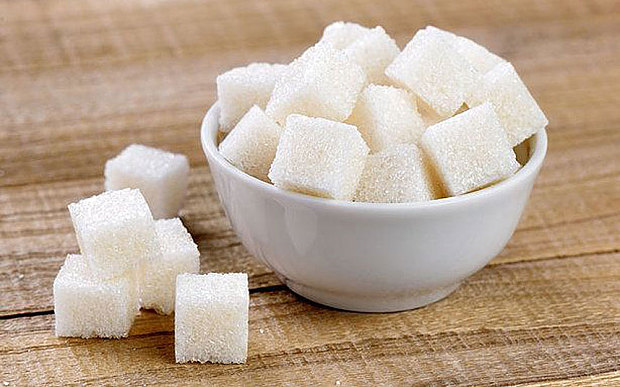 (like sucrose and high fructose corn syrup) contain a whole bunch of
calories with NO essential nutrients. For this reason, they are
called ďemptyĒ calories. There are no proteins, essential fats,
vitamins or minerals in sugar, just pure energy. When people eat 20%
or more calories as sugar, this can become a major problem and
contribute to nutrient deficiencies. Excess sugar is also very bad
for the teeth, because it provides easily digestible energy for the
bad bacteria in the mouth.
(like sucrose and high fructose corn syrup) contain a whole bunch of
calories with NO essential nutrients. For this reason, they are
called ďemptyĒ calories. There are no proteins, essential fats,
vitamins or minerals in sugar, just pure energy. When people eat 20%
or more calories as sugar, this can become a major problem and
contribute to nutrient deficiencies. Excess sugar is also very bad
for the teeth, because it provides easily digestible energy for the
bad bacteria in the mouth. simple sugars - glucose and fructose. Glucose is found in every
living cell on the planet. If we donít get it from the diet, our
bodies produce it. Fructose is different. Our bodies do not produce
it in any significant amount and there is no physiological need for
it. The thing with fructose is that it can only be metabolized by
the liver in any significant amounts.
simple sugars - glucose and fructose. Glucose is found in every
living cell on the planet. If we donít get it from the diet, our
bodies produce it. Fructose is different. Our bodies do not produce
it in any significant amount and there is no physiological need for
it. The thing with fructose is that it can only be metabolized by
the liver in any significant amounts.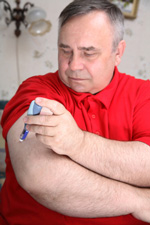 from the bloodstream and tells the
cells to start burning glucose instead of fat. Having too much
glucose in the blood is highly toxic and one of the reasons for
complications of diabetes, like blindness.
from the bloodstream and tells the
cells to start burning glucose instead of fat. Having too much
glucose in the blood is highly toxic and one of the reasons for
complications of diabetes, like blindness.

 that they can cause a
massive dopamine release, much more than we were ever exposed to
from foods found in nature. For this reason, people who have a
susceptibility to addiction can become strongly addicted to sugar
and other junk foods. The ďeverything in moderationĒ message may be
a bad idea for people who are addicted to junk food because the only
thing that works for true addiction is abstinence.
that they can cause a
massive dopamine release, much more than we were ever exposed to
from foods found in nature. For this reason, people who have a
susceptibility to addiction can become strongly addicted to sugar
and other junk foods. The ďeverything in moderationĒ message may be
a bad idea for people who are addicted to junk food because the only
thing that works for true addiction is abstinence.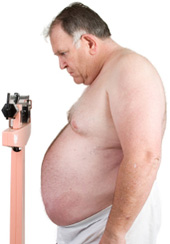
 in the world. However, new studies are
showing that
in the world. However, new studies are
showing that
 more deeply. This maximizes the amount of oxygen in your blood and
ultimately helps you use oxygen more efficiently.
more deeply. This maximizes the amount of oxygen in your blood and
ultimately helps you use oxygen more efficiently.